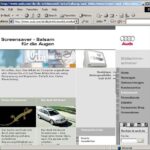The P0087 error code in Mercedes-Benz vehicles indicates a critical issue within the fuel system, specifically signaling “Fuel Rail/System Pressure – Too Low”. This diagnostic trouble code (DTC) is triggered when the engine control unit (ECU) detects that the fuel pressure in the fuel rail is below the desired level. While modern Direct Injection Turbo (DIT) engines like the M274 are engineered to withstand high underhood temperatures and fuel vaporization issues are less common, a P0087 code points to a potential problem that needs prompt attention.
Several factors can contribute to a P0087 code in your Mercedes. Understanding these potential causes is the first step towards effective troubleshooting and repair.
Potential Causes of Mercedes P0087 Code:
- Faulty Fuel Pump: The fuel pump is responsible for delivering fuel from the tank to the engine. A failing or weak fuel pump may not be able to maintain sufficient pressure, especially under high fuel demand conditions such as acceleration or when the engine is hot.
- Clogged Fuel Filter: A restricted fuel filter can impede fuel flow to the engine, leading to low fuel pressure. Regular fuel filter replacement is crucial for maintaining optimal fuel system performance.
- Fuel Pressure Regulator Issues: The fuel pressure regulator maintains consistent pressure in the fuel rail. A malfunctioning regulator might cause pressure to drop below the required level.
- Fuel Injector Problems: Leaking or malfunctioning fuel injectors can cause a drop in fuel rail pressure.
- Fuel Line Leaks or Restrictions: Leaks in the fuel lines or restrictions due to damage or debris can reduce fuel pressure reaching the fuel rail.
- Faulty Fuel Pressure Sensor: Although less common, a faulty fuel pressure sensor can provide incorrect readings to the ECU, leading to a false P0087 code.
- Low Fuel Level: In some cases, simply having a very low fuel level, especially on inclines or during cornering, can temporarily trigger a P0087 code as the fuel pump struggles to draw fuel.
Symptoms Associated with P0087 Code:
- Check Engine Light: The most obvious symptom is the illumination of the check engine light on your dashboard.
- Reduced Engine Performance: Low fuel pressure can lead to insufficient fuel delivery, resulting in decreased engine power, sluggish acceleration, and hesitation, particularly under load or during acceleration.
- Engine Stalling: In severe cases, insufficient fuel pressure can cause the engine to stall, especially at idle or low speeds.
- Difficulty Starting: Low fuel pressure can make it harder to start the engine, especially after it has been sitting for a while.
- Unusual Engine Noises: You might hear unusual noises from the fuel pump, such as whining or humming, indicating it’s struggling to operate.
- Vacuum Cleaner Sound Under Acceleration (with AC on): While not directly related to P0087, some Mercedes owners report a distinctive “vacuum cleaner” sound under hard acceleration with the AC on, which could be indirectly related to fuel system strain under high demand, though this is more anecdotal and requires further investigation in the context of P0087.
Diagnosing and Resolving P0087 Code:
Diagnosing a P0087 code requires a systematic approach. Here are some steps a qualified technician might take:
- Scan for DTCs: Use an OBD-II scanner to confirm the P0087 code and check for any other related codes.
- Check Fuel Pressure: Use a fuel pressure gauge to measure the actual fuel pressure in the fuel rail and compare it to the manufacturer’s specifications. This is crucial to verify if the pressure is indeed low.
- Inspect Fuel System Components:
- Fuel Pump: Check fuel pump operation and delivery volume.
- Fuel Filter: Inspect the fuel filter for clogs and replace it if necessary.
- Fuel Pressure Regulator: Test the fuel pressure regulator to ensure it’s functioning correctly.
- Fuel Injectors: Inspect fuel injectors for leaks and proper operation.
- Fuel Lines: Visually inspect fuel lines for leaks, kinks, or damage.
- Fuel Tank and Fuel Level: Check fuel level and for any signs of contamination in the fuel tank.
- Check Fuel Pressure Sensor: Test the fuel pressure sensor and its wiring for faults.
- Consider Environmental Factors: While less likely with modern DIT engines, extreme underhood heat could theoretically contribute to fuel delivery issues, although it’s more probable that the root cause is one of the component failures listed above.
Alt text: Engine bay of a Mercedes-Benz vehicle, highlighting potential areas related to fuel system components and heat.
Note: It’s important to remember that diagnosing and repairing fuel system issues requires specialized tools and knowledge. If you are not experienced in automotive repair, it’s highly recommended to take your Mercedes to a qualified Mercedes-Benz technician or a trusted mechanic.
Conclusion:
The Mercedes P0087 code indicates a low fuel rail pressure condition that can impact engine performance and potentially lead to stalling. While factors like underhood temperature are less likely to directly cause vapor lock in modern DIT engines, they can exacerbate underlying fuel system weaknesses. Addressing a P0087 code promptly is essential to ensure the reliable and efficient operation of your Mercedes-Benz. Proper diagnosis and repair by a qualified technician are crucial for resolving the issue and preventing further complications. Regular maintenance, including timely fuel filter replacement, can also help prevent fuel system problems and maintain optimal performance.
